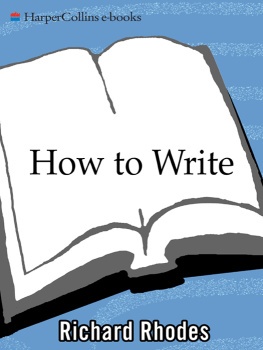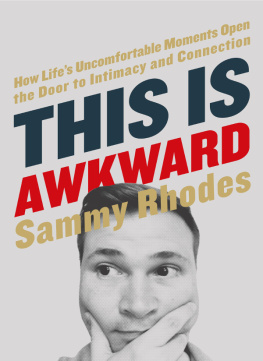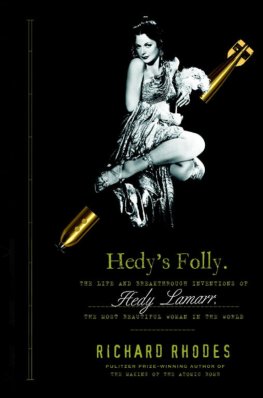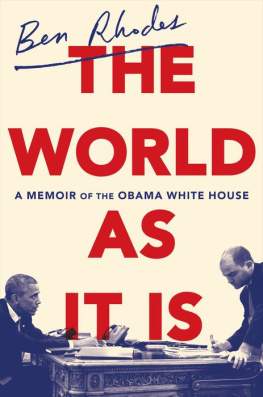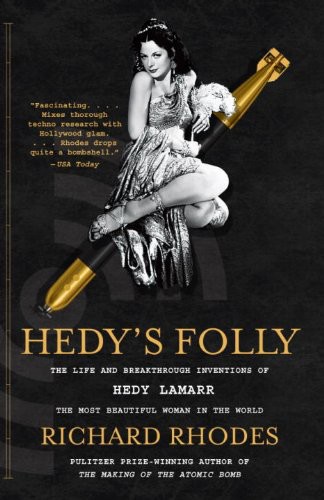ALSO BY RICHARD RHODES
The Twilight of the Bombs
Arsenals of Folly
John James Audubon
Masters of Death
Why They Kill
Visions of Technology
Deadly Feasts
Trying to Get Some Dignity (with Ginger Rhodes)
Dark Sun
How to Write
Nuclear Renewal
Making Love
A Hole in the World
The Making of the Atomic Bomb
Looking for America
Sons of Earth
The Last Safari
Holy Secrets
The Ungodly
The Inland Ground
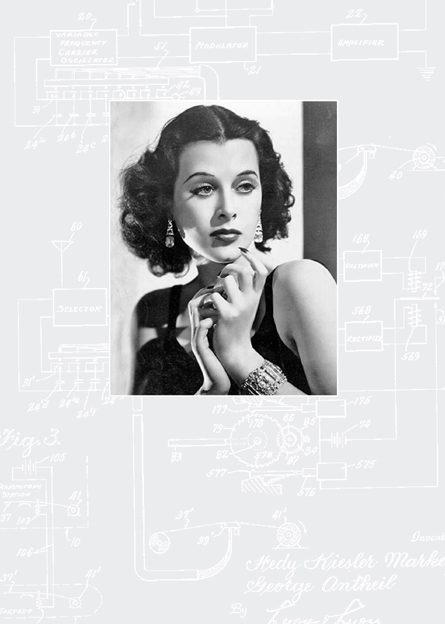
Copyright 2011 by Richard Rhodes
All rights reserved. Published in the United States by Doubleday, a division of Random House, Inc., New York, and in Canada by Random House of Canada Limited, Toronto.
www.doubleday.com
DOUBLEDAY and the portrayal of an anchor with a dolphin are registered trademarks of Random House, Inc.
Grateful acknowledgment is made to the following for permission to reprint previously published and unpublished material:
The Estate of George Antheil: Excerpts from Bad Boy of Music by George Antheil (Doubleday, Doran & Company, Inc., 1945) and excerpts from the unpublished writings and correspondence of George and Boski Antheil (Library of Congress Antheil Collection). Reprinted by permission of The Estate of George Antheil, administered by Charles Amirkhanian.
Viking Penguin, a division of Penguin Group (USA) Inc., and Williams Verlag AG: Excerpts from The World of Yesterday by Stefan Zweig, translated by Helmut Ripperger and Ben Huebsch, copyright 1943 by the Viking Press, Inc. Rights to the underlying work, copyright 1977 by William Verlag AG, Zurich. Reprinted by permission of Viking Penguin, a division of Penguin Group (USA) Inc., and Williams Verlag AG.
Jacket design by Michael J. Windsor
Jacket photo of Hedy Lamarr: Getty Images #2637880 Hulton Archive/Getty Images
LIBRARY OF CONGRESS CATALOGING-IN-PUBLICATION DATA
Rhodes, Richard, 1937
Hedys folly : the life and breakthrough inventions of Hedy Lamarr, the most beautiful woman in the world / Richard Rhodes.1st ed.
p. cm.
1. Lamarr, Hedy, 19132000. 2. ActressesUnited StatesBiography. 3. Motion picture actors and actressesUnited StatesBiography. 4. Spread spectrum communications. I. Title.
PN2287.L24R54 2011
791.43028092dc23
[B] 2011021746
eISBN: 978-0-385-53439-0
v3.1
For Anthony and Denise
A grant from the Alfred P. Sloan Foundation supported the research for this book.
Contents
[ INTRODUCTION ]
Hedy Lamarr, Inventor
Invention is a strange business. Is it creative, like painting or sculpture? Its certainly original, by definition genuinely new, but its also and fundamentally practical. Patent law says an idea must be reduced to practice to be patentable. That means an idea must be embodied in some new and useful mechanism or process or material. So invention is creative, but not in the same way the fine arts are. Usefulness isnt fundamental to a sculpture or a painting.
Is invention, then, scientific? Many inventions today are explicitly derived from scientific discoveries. The discovery that certain materials, stimulated in a particular way, would emit coherent lightlight all of the same wavelengthled to the invention of the laser. The laser was a practical device that embodied the discovery, but it wasnt the discovery itself. The distinction is clear even in prescientific times: Fire was a discovery; the fireplace was an invention. That fire hardened clay was a discovery; pottery was an invention. Again, as with fine art, usefulness isnt a requirement for scientific discovery.
That invention is different from fine art or scientific discovery suggests that inventors might be different from artists or scientists. They are. Many inventors are technically trained, of course, especially those who invent professionally. Thomas Edison was home- and self-educated, but Nikola Tesla, the inventor of radio, was an electrical engineer. Some inventors have been artists. Samuel F. B. Morse, the co-inventor of the telegraph, was a professional painter. The same person might do science and invent. I knew such a person, a Nobel laureate American physicist named Luis Alvarez. Luiss many inventions won him a place in the National Inventors Hall of Fame. He told me once that he valued his recognition as an inventor more than the Nobel.
But many inventors, past and present, have been people with no obvious special qualifications for inventing. Come to think of it, there are no special qualifications for inventing. No school I know of offers such a degree. As a sculptor is someone who sculpts, as a writer is someone who writes, an inventor is someone who invents.
The 1940s Austrian-American movie star Hedy Lamarr was an inventor. The public-relations department at Metro-Goldwyn-Mayer, where Hedy began her American film career, put out the claim that she was the most beautiful woman in the world, and by Western standards she may have been. It annoyed her deeply, however, that few people saw beyond her beauty to her intelligence. Any girl can be glamorous, she famously and acidly said. All you have to do is stand still and look stupid.
Hedy invented as a hobby. Since she made two or three movies a year, each one taking about a month to shoot, she had spare time to fill. She didnt drink and she didnt like to party, so she took up inventing. When she was a girl, her father, a Viennese banker, had encouraged her interest in how the world worked, taking walks with her and explaining the mechanics of the machinery they encountered. As a young woman, before she emigrated from Austria to the United States, she married a munitions manufacturer and listened in on the technical discussions he held with his Austrian and German military clients. She also had a keen sense of the worlds large and small failings, some of which she decided she could fix. In Hollywood she set up an inventors corner in the drawing room of her house, complete with a drafting table and lamp and all the necessary drafting tools.
Hedy conceived of her most important invention in 1941, in the dark years between the German invasion of Poland in September 1939 and the Japanese attack on Pearl Harbor in December 1941 that finally impelled the United States to enter the war. She wanted to help her newly adopted country (where she was still technically an enemy alien) and saw the need for a weapon to attack the German submarines that were devastating North Atlantic shipping. Its characteristic of her confidence in her inventive gift that she believed she could devise such a weapon and help change the course of the war. Her belief was folly in two senses of that fine old word: extravagant in consequential invention, and founded on the foolish notion that the United States Navy would take correction from a Hollywood actress of great beauty in a matter about which it was not prepared to listen to its own submarine commanders.
Her unlikely, but ideal, partner in that work was an avant-garde composer and concert pianist named George Antheil, at five feet four a cello-sized man, as


